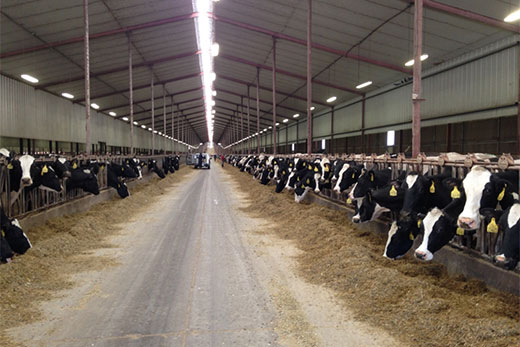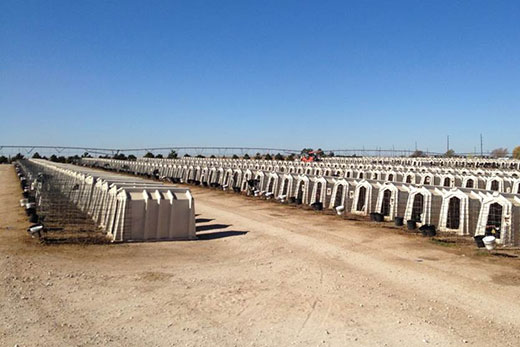Mega dairies – USA farms with up to 30,000 cows – will become a threat to New Zealand’s dairy industry but copying the farming model is not the answer, says DairyNZ.

Most dairy cows on mega dairies are housed well away from their food source.
A mega dairy is classed as a farm which milks 2000 cows and has herds of 12,000 to 30,000 animals.
Cows are kept in ‘containment’ facilities, some open-sided structures, others enclosed and air conditioned.
Cows are milked 24 hours a day 365 days a year through mostly 60-bail rotary sheds or parallel, 40-aside herringbone sheds. Labour, mainly Mexican migrant labour, costs between $10-$12 an hour compared to $13-$30/hr in New Zealand.
There’s an even bigger gap in the cost of housing infrastructure. In the US building costs are between $1100 and $1500 per cow, compared to $2500 to $3500 in New Zealand.
On the biggest farms, one calf is born every 30 minutes, and calves are kept in ‘hutches’, fed by bottles delivered by bike-riding calf-rearers.
David says the replacement rate within the herds is 45 per cent, but by reducing this farmers can quickly ramp up production to meet demand.
Most herds are housed some distance from their feed source, which David says can be a major disadvantage.
“One farmer we spoke to said: “We’ve forgotten what our grandparents told us – ‘if you own a cow you’d better own an acre’ – many don’t own the land the feed is grown on”.
This makes the farms vulnerable to fluctuating feed prices, but a relaxing of requirements to grow corn for biofuel is bringing down the cost of feed.
David believes New Zealand farmers do have the ability to increase production by gaining greater efficiencies from their grass-based system – and knowledge and tools are there to help them do so.



0 Comments
Leave a Comment